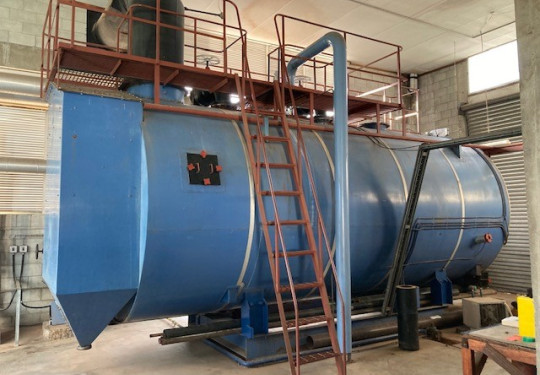RNZAF Base Ohakea decommissions boiler in switch to cleaner heating
Royal New Zealand Air Force (RNZAF) Base Ohakea will quietly pass a historic milestone this winter when, as the temperatures drop, no one will have to fire up the decades-old natural gas-fired boiler central heating system.
04 June, 2024
For the first time, the Manawatū air base will rely on clean electric heating instead of the fossil fuel central heating system of a large boiler suppling hundreds of metres of steel water pipes around the base, which fed underfloor heating and radiator heaters throughout hangars, offices, the fire station and barracks.
RNZAF Base Ohakea, where the average winter low is 7°C (and the forecast minimum for World Environment Day on Wednesday is 4°C), opened in 1939 and in the early days it was heated by a coal-fired boiler which fed the heating pipes. The system was converted to natural gas in the 1980s.
The New Zealand Defence Force (NZDF) carried out a feasibility study in 2016 to look at replacing the boiler, including work funded by the Energy, Efficiency & Conservation Authority, and over the last few years has been steadily converting Ohakea’s buildings to clean electric heating.
“Not turning on the central boiler is a very significant milestone for both Ohakea and the NZDF,” said Mark Brunton, Head of Defence Estate & Infrastructure.
“Not only does this reduce the base’s reliance on gas, which generates more carbon emissions than electricity, it also provides more security of supply for heating.”
In 2020, the Government introduced the Carbon Neutral Government Programme (CNGP) that requires all government agencies, including the NZDF, to aim for carbon neutrality by 2025.
Transitioning away from fossil fuelled boilers is a priority for all CNGP agencies. Moving faster to complete the decommissioning of the gas-fired central boiler at RNZAF Base Ohakea was an early initiative in NZDF’s journey to a greener future.
A Measure & Verification Report in May 2024 confirmed the project has resulted in the base achieving a 33 per cent reduction in natural gas consumption, offset by a 12 per cent increase in electricity consumption, but resulting in an overall reduction in annual carbon emissions of 270 tonnes of CO2 equivalent.
Carbon emissions reduction was not the only driver, or justification, for the project and there have been additional benefits.
Introduction of a centralised heat pump and ventilation system at the Fire Station has resulted in a positive air pressure condition, which aids in reducing the unpleasantness of aircraft fumes in the building.
The previous piped hot water system meant that in some circumstances, a failure such as a pipe leak could result in the entire network being out of commission for a period of time, affecting a large number of buildings.
Decentralising space heating options around the base has eliminated this disadvantage, so that now any system issues will only impact single buildings and not multiple facilities.
Number 1 Hangar, home to No. 14 Squadron and the Central Flying School’s T-6 Texan II aircraft, has an underfloor heating system. Maintaining the required floor temperature was achieved through installing a 161 kW Air Source Hot Water Heat Pump.
At the large Number 2 Hangar, home to No. 42 Squadron’s King Air 350s, the project team considered a number of cost-effective options for heating a fairly large working area that is used by a small maintenance team.
This was achieved through use of ceiling-mounted electric infrared heaters. A successful trial was carried out using portable heaters, before the decision to install a permanent solution was made. Radiant heaters heat objects and people, rather than the air, and work better in high-roofed areas, such as a hangar situation. It was also the occupants’ preferred option.
The heating of barracks has also been electrified.
